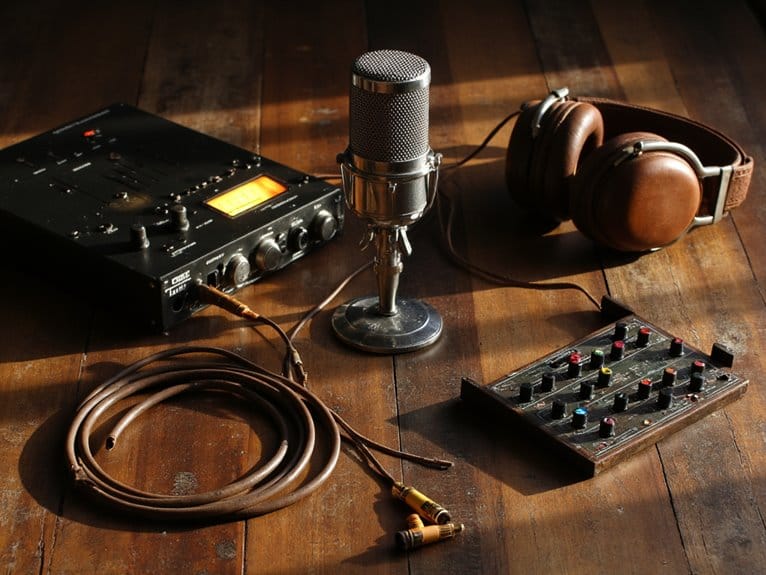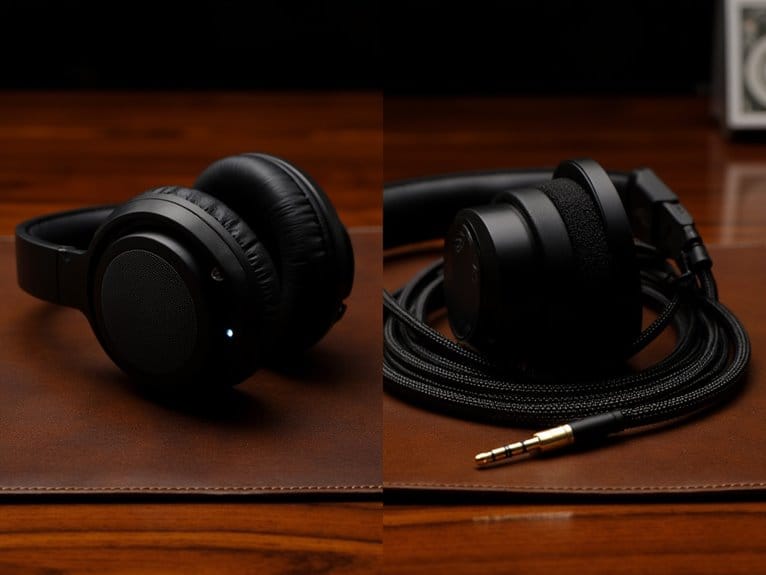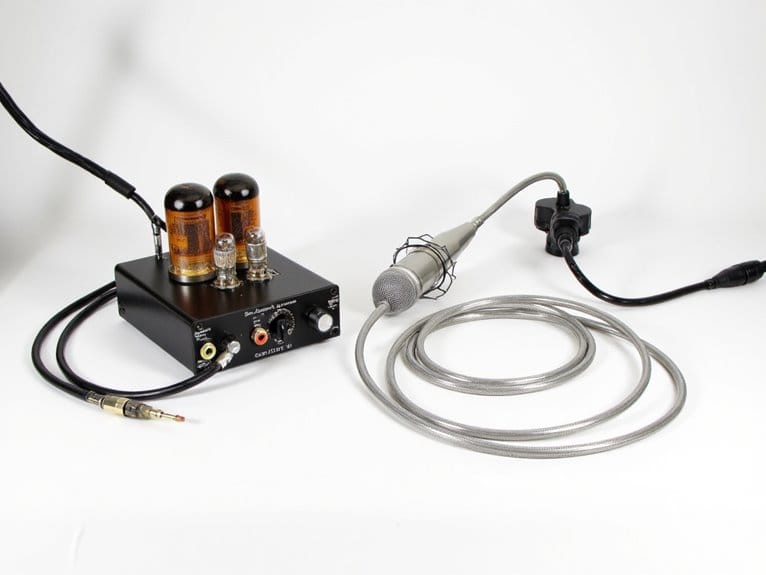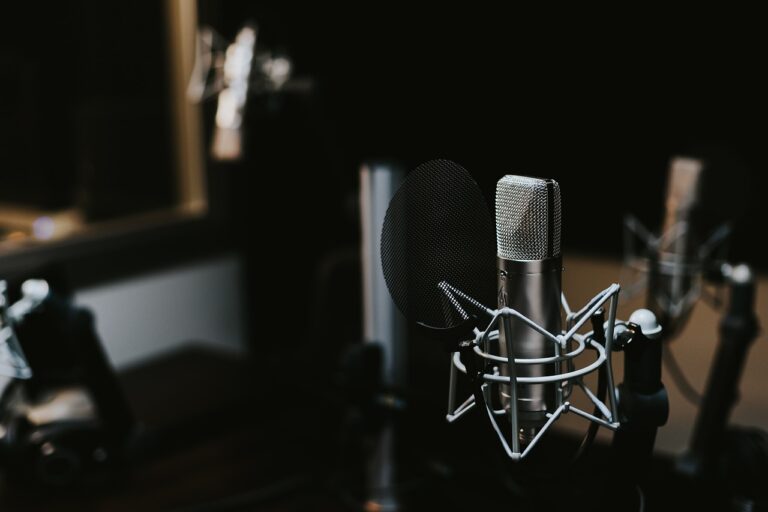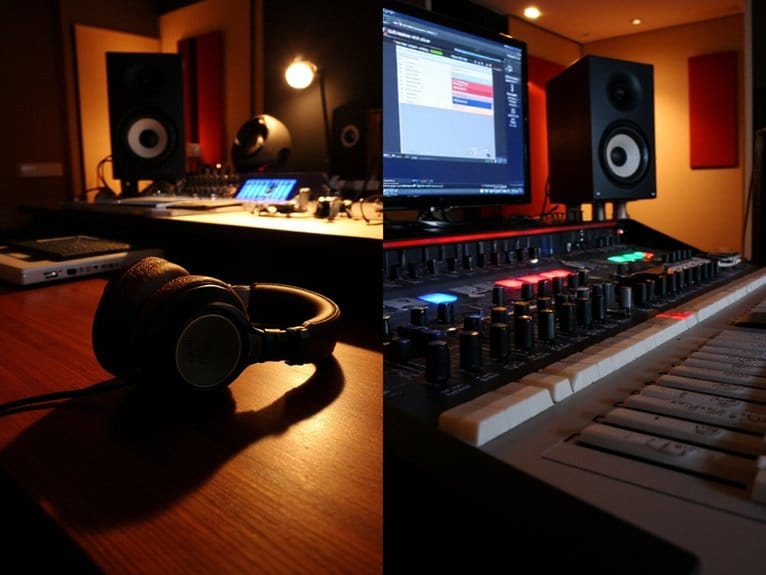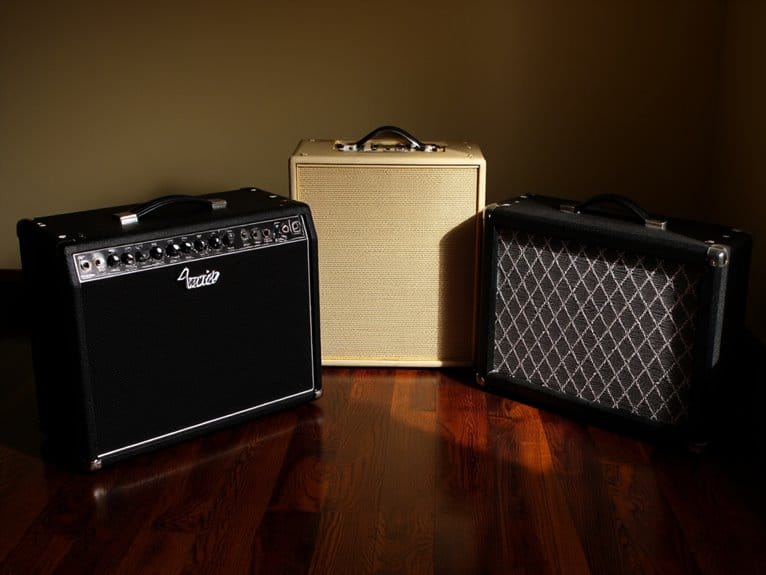Pad Sounds: Creating Atmospheric Textures
Pad sounds serve as electronic music’s atmospheric foundation, utilizing layered oscillators, envelope shaping, and LFO modulation to create immersive textures that transform basic synthesizer tones into expansive sonic landscapes. You’ll achieve professional results by combining multiple waveforms, applying subtle detuning for natural chorus effects, and incorporating acoustic samples with synthesized elements to add organic warmth. These techniques, pioneered by ambient composers like Brian Eno, remain essential across genres from EDM’s supersaw breakdowns to R&B’s emotional backdrops, and mastering their nuanced production methods reveals deeper creative possibilities.
We are supported by our audience. When you purchase through links on our site, we may earn an affiliate commission, at no extra cost for you. Learn more.
Notable Insights
- Layer multiple oscillators with different waveforms and slight detuning to create rich, wide stereo textures.
- Use slow attack and long release envelope settings to achieve smooth, evolving pad sounds.
- Apply LFO modulation to pitch, amplitude, and filter cutoff for subtle movement and organic feel.
- Combine acoustic instrument samples with synthesized elements to add warmth and natural character.
- Employ granular synthesis and time-stretching techniques to generate complex, evolving atmospheric textures.
The Evolution and Musical Context of Pad Sounds
While most people associate synthesizer pads with the glossy pop hits of the 1980s, I’ve found that their roots actually stretch back to the experimental studios of post-war Europe, where composers like Pierre Schaeffer and Karlheinz Stockhausen were manipulating tape loops and electronic oscillators to create sustained, atmospheric textures that would later define what we call pad sounds.
This pad history reveals how these ethereal tones evolved from academic experiments into mainstream musical elements, gaining cultural significance as they bridged electronic music with popular audiences.
You’ll notice how Brian Eno’s ambient work in the 1970s, followed by the supersaw waveform’s introduction in 1997, transformed pads into essential components of everything from new wave to modern EDM, making them indispensable tools for creating emotional depth in contemporary music production.
Synthesis Techniques and Sound Design Methods
Though creating convincing pad sounds might seem like magic to newcomers, I’ve discovered that the fundamental techniques revolve around a few core synthesis principles that, once mastered, will transform your atmospheric textures from amateur to professional quality.
Waveform layering forms the foundation, where you’ll combine multiple oscillators with different waveforms-sine waves for warmth, sawtooths for richness, and squares for character.
Envelope shaping through careful ADSR adjustment creates those signature slow attacks and extended releases that define atmospheric pads.
- Detune multiple oscillators slightly to create natural chorus effects and stereo width
- Apply LFO modulation to pitch, amplitude, and filter cutoff for evolving movement
- Layer acoustic instrument samples with synthesized elements for organic warmth
- Use granular synthesis and time-stretching for complex, evolving textures
Modulation techniques and sound texturing complete the process. Modern electronic drum sets with dual-zone mesh pads can provide realistic percussive elements that blend seamlessly with atmospheric pad textures for enhanced dynamic response.
Production Applications Across Musical Genres
When I first started producing music across different genres, I quickly realized that pad sounds aren’t just versatile tools-they’re genre-defining elements that can make or break a track’s emotional impact.
In ambient and experimental music, you’ll use pads as dense, immersive soundscapes, employing physical modeling synthesis with heavy reverb and delay to create atmospheric interest beyond traditional melody structures. In this sonic realm, a kawai digital piano can serve as a versatile tool, allowing you to blend organic tones with electronic textures seamlessly. By layering its rich timbres with carefully crafted soundscapes, you can evoke a deeper emotional resonance within your compositions. Experimenting with modulation and effects on the piano’s output further enhances the overall atmosphere, pushing the boundaries of traditional musical expression. Exploring how polyphony affects your playing opens up new avenues for sonic exploration, as each voice interacts in intricate ways to create lush harmonies. By embracing the potential of polyphonic textures, you can construct complex layers that challenge conventional song structures and captivate listeners. This interplay not only enhances your compositions but also invites a sense of spaciousness, allowing for more dynamic interactions within your soundscapes.
EDM production relies heavily on supersaw waveforms with extended release times, where pad layering multiple detuned voices creates those euphoric breakdowns in trance and hardstyle.
Pop and R&B applications focus on blending synth and sample-based pads for emotional depth, supporting vocal melodies while maintaining ambient textures that enhance listener engagement without overshadowing the primary elements.
On a final note
You’ve now got the essential knowledge to craft compelling pad sounds that’ll transform your productions from basic to breathtaking. Whether you’re layering vintage analog warmth with modern digital precision, or sculpting atmospheric textures that support your melodies without overwhelming them, these techniques will serve you well across any genre. Start experimenting with different synthesis methods, trust your ears, and don’t be afraid to push boundaries-that’s where the magic happens.


